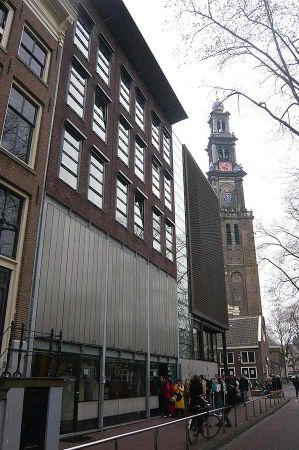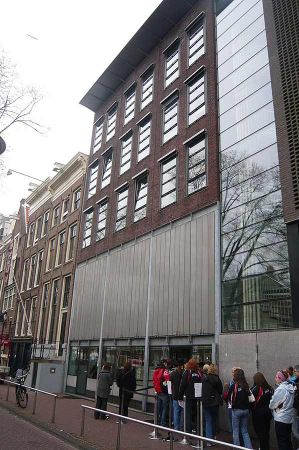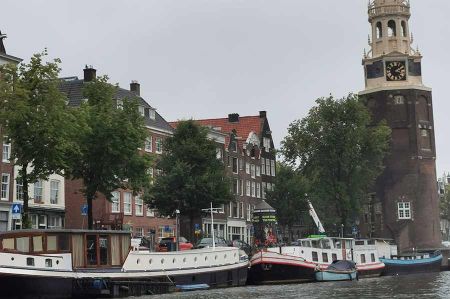Visit to the Anne Frank House in Amsterdam
- Written by Portal Editor
Who doesn't know that the world's most famous diary was written by the girl Anne Frank in her hiding place in a secret annex in Amsterdam and which became world famous after her murder.
It shows quite clearly the forced life of secrecy, the fear of discovery and the fate of the many persecuted people during the Nazi era. Do we actually need to drift further to the right today before the majority of people actually wake up because they have once again fallen for the charlatans of right-wing populism and contempt for humanity?
With the e-bike to the Anne Frank House Prinsengracht

You could almost miss the Anne Frank House, so inconspicuous is the narrow house in the western Jordaan district of Amsterdam, right on the canals. But you become aware of it when you see the long queues of people at the house, even during a boat tour. The house at Prinsengracht 263 - like the building next door at number 265, which was later purchased by the museum - was built in 1635 by Dirk van Delft. The current facade on the canal side was created during a renovation in 1740, when the rear extension was demolished and replaced by today's larger extension. The house was originally a private residence and later a warehouse. In the 19th century, horses were housed in the front part with its wide, stable-like doors. At the beginning of the 20th century, a manufacturer of household goods moved into the building. He was followed in 1930 by a producer of piano rolls, who gave up ownership in 1939.
Opekta and Pectacon – Otto Frank companies move in

The secret annex is protected from view from the street by other houses on all four sides, which made it a suitable hiding place for eight Jewish people during the time of German occupation and persecution of Jews: in addition to Otto Frank and his wife Edith Frank-Holländer, the two of them Children Margot and Anne, Hermann and Auguste van Pels with their son Peter and Fritz Pfeffer. They lived in darkened rooms in around 50 square meters for over two years and a month. Anne Frank described this in great detail in her diary. The hidden people could only come into the front building in the evenings and on weekends, when the company's employees had left the building.
The Frank family is found and deported
Eventually they were betrayed and arrested and deported by the German Gestapo on August 4, 1944. All family members except father Otto Frank died.
The hiding place was then “pulsed”; The confiscated clothing, furniture and personal items were sold in the Netherlands or distributed to bombed-out families in Germany.
However, Miep Gies and Bep Voskuijl were able to save, among other things, Anne Frank's diary before the eviction.
Enlightenment and awakening - never again the Holocaust
Numerous school classes visit the Anne Frank House every day and are moved by Anne's diary. Educational work and work with young people are important to the museum. There is a special teacher portal with special materials and information and guided tours are offered for young people
The Anne Frank House is divided into two areas. At the front is the museum, which contains permanent and special exhibitions. They show the history of the Holocaust as well as the emergence of National Socialism. Anne Frank and her diary are also discussed in detail. The rear building forms the other area of the Anne Frank House. The Frank family was hiding here. To this day, the rooms have largely been preserved in their original form as a memorial.
You can also quickly reach the Anne Frank House from the main train station by turning west into the Jordaanviertel. Many canal cruises also start and end directly at the museum, so you can get off from any boat stop and visit the Anne Frank House.
Our recommendation: take your time and look at the exhibition and Anne's hiding place in peace.
Westermarkt stop: tram 13, 14, 17 and buses 170, 172, 174
Prinsengracht 263-267, 1016 GV Amsterdam
Please read as well:
The health-promoting spoonful of honey in the morning
Archaeological Excavations of the settlement of Siculi in 2015
